The geomorphology of the Perthshire reserves
In the last few weeks the Ranger team have been learning about the landscape and underlying geology of our Perthshire reserves. Assistant ranger Hugh shares with us his findings following a fascinating tour with local expert Richard Paul.
It’s hard to imagine, but the land beneath our feet is constantly changing. Processes such as the movement of tectonic plates, and erosion and deposition caused by rivers are very gradually transforming the face of our landscapes.
Scotland is comprised of an incredible mix of different rock types and lithologies due to the way its landmass was formed. From the massive gabbro peaks of the Cuillin Mountains of Skye to the soft sandstone that forms the south-eastern cliffs of the Berwickshire Coast.
Strathtay is another area where an interesting range of geology can be found. This blog takes a look at the rock and sediment composition found under the Perthshire reserves, and how they can influence the wildlife found there.
Plate collisions occurring 425-480 million years ago in a phenomenon known as the ‘Caledonian Orogeny’ heated and deformed rocks in multiple phases, which resulted in the complex field geology present today. This was followed by the glacial periods which scarred and sculpted the mountains, valleys and rivers. Striations, visible as linear marks can be seen on the bedrock surface, a relic of an ancient, powerful force that has sculpted our lands.
Our Reserves
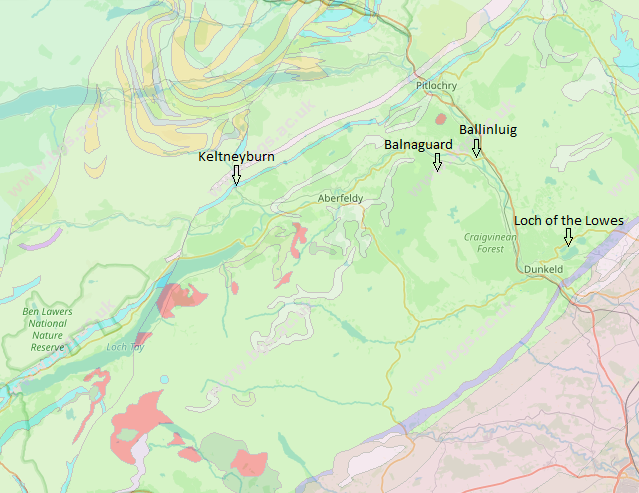
Just north of the HBF sit the crystalline metamorphic rocks which give our hills that pretty shimmering glimmer in the sunlight. In fact, in Gaelic ‘Ben Vrackie’ actually means ‘Speckled Mountain’! Similar to the geology of Schiehallion, consisting largely of quartzite, that white/pinkish rock that litters the boulder-fields and reflects the light.
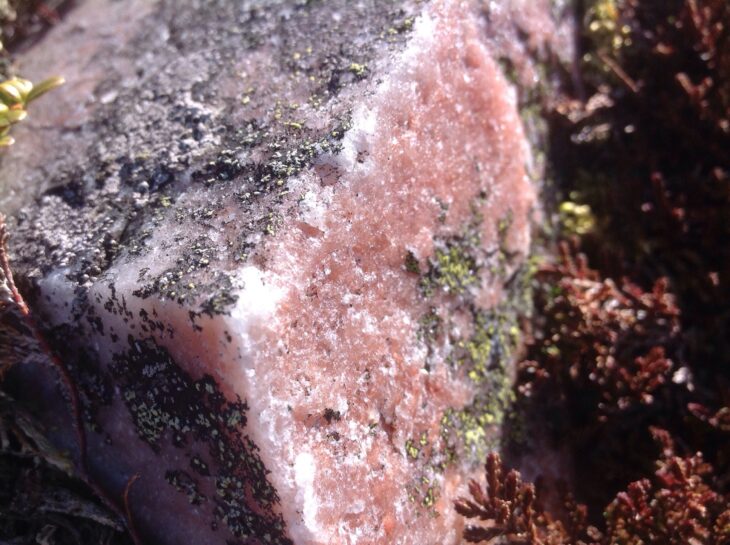
The Dunkeld area is comprised of sandstone and metamorphosed sedimentary rock. In the superficial layer, that is rocks less than 2.6 million years old, raised marine deposits consisting of sand and gravel lie over the bedrock. Historically, many of the buildings therefore were and still are built out of sandstone in the surrounding area.
The Balnaguard and Keltneyburn reserves are located on patches of a ‘terrigenous’ matrix; a muddy clay composition made from material eroded from dry land. Both located on a slope, the substrate is held securely by the tree and shrub roots.
Stretches of metalimestone (a crystalline marble appearing rock) can be found running from the Ben Lawers mountain range to Pitlochry. Also arguably the best example of a Dalradian limestone pavement (formed over 600 million years ago) can be found at the north-eastern foot of Schiehallion.
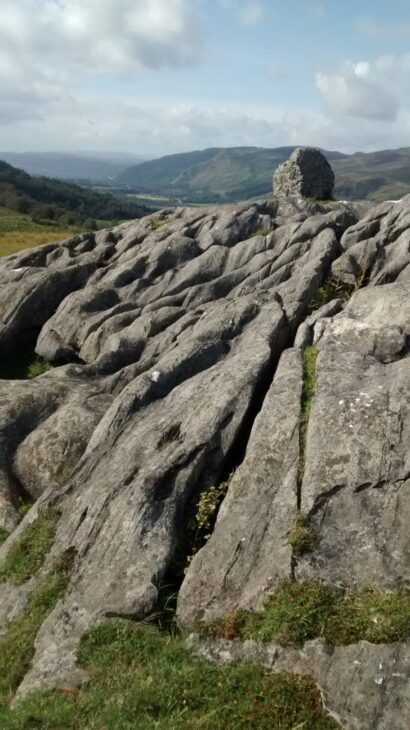
Following the Tay and the Tummel, an alluvium (floodwater deposit) comprised of clay, silt and sand lay the foundations of the river channel. This is bordered on the outskirts by glacially deposited sands and gravel where our reserves Tomdachoille and Ballinluig sit.
This constantly shifting glacial till gives rise to a complex evolving habitat. Many invertebrates and over 400 species of plants thrive here on the Tummel Shingle Islands, ranging from lesser marshwort and bird’s-nest orchid to mosses and field gentian.
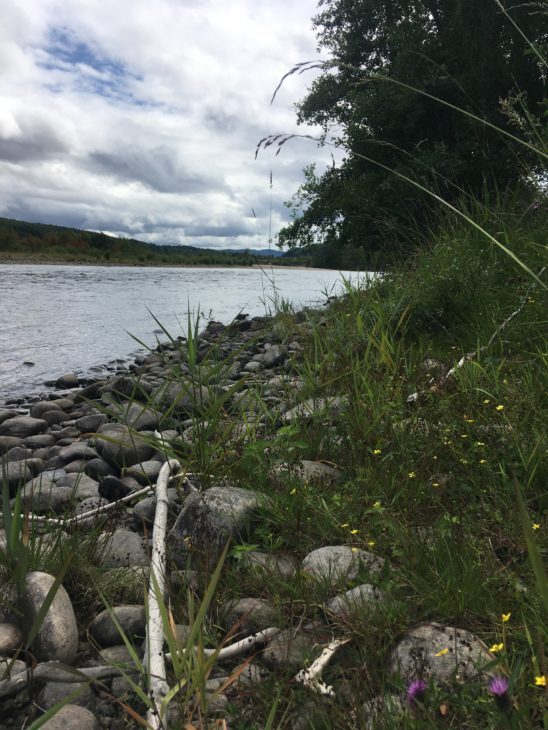
Plants and wildlife
But what does all this mean in terms of the natural environment? The physical landscape plays a vital role in the production of new habitats, woodland types, flowers and therefore animals!
Rocks contain and provide a wide range of minerals which enter the soil layer. Plants depend upon the uptake of these minerals within the soil in order to grow and develop. In turn, animals feed on the plants and obtain many of the beneficial properties within, which aids for a healthy functioning body.
Even the famous limestone pavements of Schiehallion hold an important ecological function. Limestone aids in reducing the acidity of the soil by raising the pH level, creating a more favourable habitat for certain trees and shrubs, as well as your garden flowers and veg!
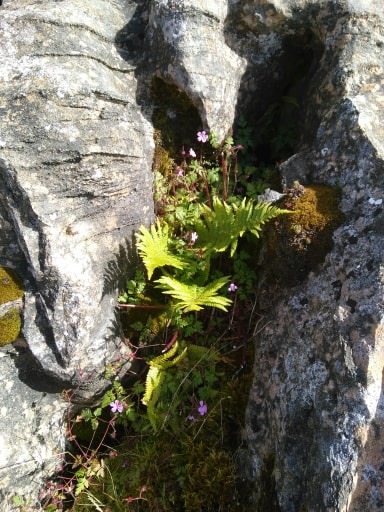
Species such as rock rose, thyme, herb robert and wild strawberry are all lime-loving plants and grow in the limestone fissures known as grykes, protected and out of reach of grazing animals. Snails are often found on the limestone outcrops as they use the calcium to build their shells.
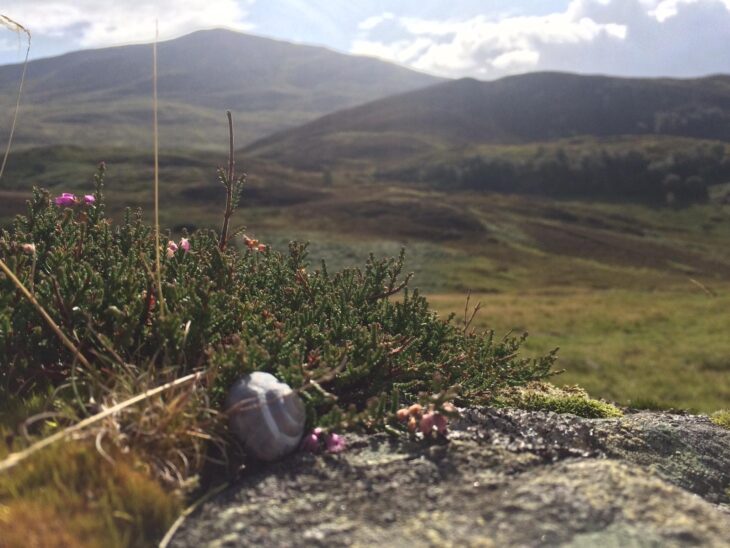
Limestone is also very permeable, so rainfall drains through the rock allowing for a healthy groundwater level. Where the bedrock is not permeable, for instance in the extensive intrusions of granite sprinkled around the area, peat bogs form and can stretch to over 10 metres deep!
Peatbogs are extremely valuable, not only for their ability to sequester (or lock up) carbon, but also in acting as a natural flood defence and providing a habitat for rare plant and bird species.
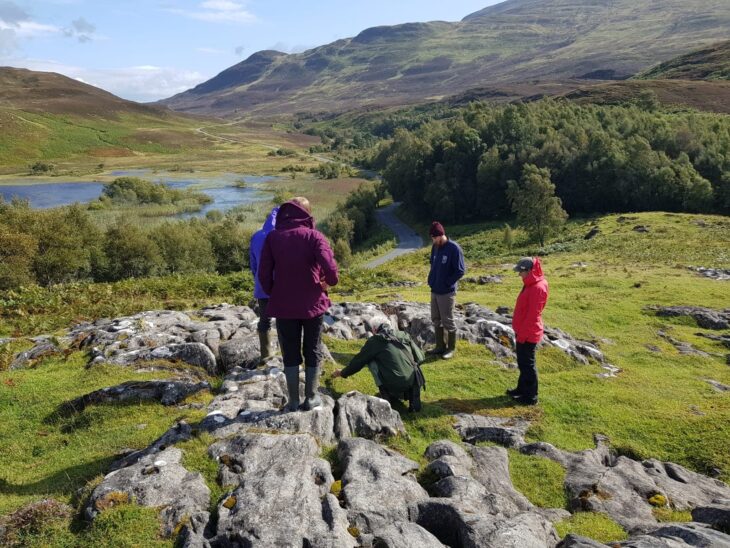
Whilst the sandy soils of Tayside are great for free draining root crops such as carrots, parsnips and tatties, the clay soils following the Tay and Tummel rivers benefit moisture loving plants. Birch, hawthorn, holly, crab apple and rose trees all do very well on clay soil, which in turn help sustain the berry-feeding wildlife.
In contrast Scots pines enjoy growing on granite outcrops, which also support thriving communities of lichens and mosses. It is claimed by some that the electromagnetic energy of quartz crystals can help plants grow, whilst algae has been shown to grow underneath quartz and still be able to photosynthesise from rays of sunlight passing through the crystalline rock. It is even debated that this may have been how plants first colonised land.
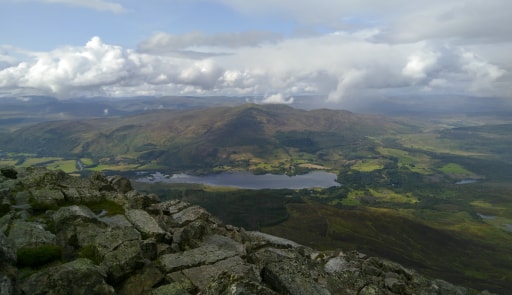
It is amazing to think that the land, the rocks, the soil, the supported plant and tree communities and the associated wildlife that we observe today, are all working together as one complex system that has evolved together over the millions of years. This relationship allows for the extraordinary mosaics of different landscapes and habitats that are present on the relatively small landmass that we call home.
Hugh Panton – Assistant Ranger
Help protect Scotland’s wildlife
Our work to save Scotland’s wildlife is made possible thanks to the generosity of our members and supporters.
Join today from just £3 a month to help protect the species you love.
Preface
In the last few weeks the Ranger team have been learning about the landscape and underlying geology of our Perthshire reserves. Assistant ranger Hugh shares with us his findings following …
